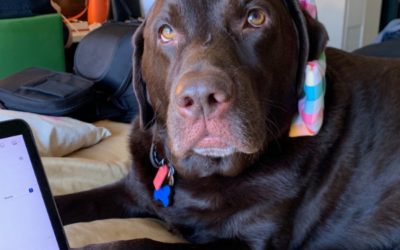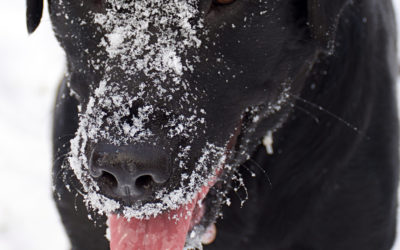Mushroom Poisoning In Dogs And Cats
New July 4th bowes and ties from The Pampered Pooches via Instagram @thepamperedpooches

- The most dangerous type of mushroom is the Amanita, which contains amanitin toxins. Clinical signs seen from this mushroom include severe gastrointestinal signs (within 6-24 hours), a “false recovery” period (where your dog appears to get better), and then severe liver failure (at 36-48 hours post-mushroom exposure). Acute kidney injury (AKI) can also develop in the end stages. These types of deadly mushrooms include Amanita, Galerina, Lepiota, A. phalloids (death cap, death angel), and A. ocreata.
- The Inocybe spp. and Clitocybe dealbata mushrooms contain the toxin muscarine and cause profuse SLUDE signs (e.g., salivation, lacrimation, urination, diarrhea) and neurologic signs.
- Amanita muscaria and A. pantherina are a different type of Amanita that contain the toxins muscimol and ibotenic acid. Clinical signs from this type of mushroom include ‘walking drunk,’ severe sedation, tremors or even seizures.
- The false morel (Gyromitra spp.) causes profuse vomiting and diarrhea and is generally not fatal. Rarely, it can cause seizures.
- Some types of mushrooms just cause gastrointestinal irritation (e.g., vomiting and diarrhea) and are rarely life threatening when ingested. Signs can be seen in 1-6 hours, and generally resolve after 1-2 days. These types of mushrooms include the following types: Agaricus, Boletus, Entoloma.
- Hallucinogenic mushrooms aren’t life-threatening and rarely need treatment. That said, signs of ataxia, acting abnormal, howling, abnormal eye movement and hyperthermia can be seen when dogs ingest them. These types of mushrooms include the following types: Psilocybe, Conocybe, Gymnopilus spp.

Signs of mushrooms toxicity in dogs
Depending on the type of mushroom, how much, and the length of time since they ate it, the signs of toxicity will vary. But, common signs might include any of the following:
- Wobbling, loss of balance, or walking as if drunk (“ataxia”)
- Vomiting
- Salivating
- Yellowing of skin and “whites of eyes”
- Sleep-like coma
- Seizures
- Weakness
- Lack of coordination
- Tremors
- Hallucinations
- Vocalizations
- Disorientation
- Agitation
- Seizures
- These toxins can also affect the kidneys and liver causing a myriad of problems.

If you see mushrooms in your yard, carefully remove one or two and bring them for identification to a local garden store or a local mushroom (mycology) expert. Alternatively, you can take pictures of the mushrooms for identification (just make sure you photograph all of the identifying parts – the gills, the cap, the base of the stem, etc.).
Because mushroom growths can be difficult to fully get rid of, it’s best to consult with a local expert on ways to deal with them in your yard. And if the mushrooms in question are confirmed to be toxic to dogs and cats, be sure to keep them out of the yard (or at least that part) until the mushrooms are removed or sectioned off.
If you’ve got mushrooms in your yard, take a look at the articles and resources below. They can better help you identify and react to those little fungi popping up all over the place. And hopefully they will help you and your pup better enjoy your walks together and romps in the yard.
If you’re worried that your pet may have eaten a poisonous mushroom get samples and good pictures of the mushroom(s) and then contact your veterinarian, local Animal ER, or a Pet Poison Hotline immediately! You can also upload your photos and where the mushrooms were found to the Poisons Help: EMERGENCY Identification for Mushrooms & Plants Facebook Group (https://www.facebook.com/groups/144798092849300) – this open Facebook group can be a great resource in the event of an unknown mushroom or plant ingestion by your cat or dog. The admins are skilled at mushroom & plant ID and typically respond quite quickly. Be sure to have good pics of the offending plant or mushrooms, from all angles and in good light, as these will be crucial to help ensure the best chance of an ID.


You Might Also Like
What To Do If Your Dog Gets Bit By A Venomous Spider
Happy Wednesday, everyone! I was sitting on our back patio a few nights ago watching Jake watch a spider crawl in front of him. This gave me an idea for a blog post on spiders and What To Do If Your Dog Gets Bit By A Venomous Spider. Fortunately, Jake didn't make a...
Pet Cloning: What Is It And How Does It Work?
Happy Wednesday, everyone! Pet Cloning…What is it, and how does it work? I recently found an article in Modern Dog Magazine, “Meet Mella, The Cloned Winery Dog,” about how a California winery spent $50,000 cloning their dog. Before reading the article, I had two...
What Spring Weather Will Reveal About Your Home
Happy Wednesday, everyone! What Spring Weather Will Reveal About Your Home. Spring weather can be quite the revealing element! After weathering the winter out, with all the cold, rain, and dryness it brings, blooming into spring will highlight everything wrong with...
How To Be The Kind Of Traveler Others Are Grateful For
Happy Wednesday, everyone! How To Be The Kind Of Traveler That Others Are Grateful For. I typically talk about animals and food, but after taking a quick trip to Tennessee last year, I thought this post was fitting. I have wonderful memories of my trip to Tennessee...
10 Reasons To Learn To Cook
Happy Wednesday, everyone! Do you love to cook? Here are 10 Reasons To Learn To Cook! As you know, I’ve written three cookbooks and am working on my 4th cookbook. I found my love for cooking and baking from my grandparents and parents. I’m lucky to have Mr. TAL,...
3 Simple Ways to Get Winter-Ready Without the Stress
3 Simple Ways to Get Winter-Ready Without the Stress...This brings me to ask...What is your favorite season? If you live in an area like I do that has all four seasons, it’s easier to choose, and I have to say that winter is my least favorite, with fall being my...







Good morning to you! Thanks for this timely blog. Your resources are excellent. I am going outside now to double check!
Good morning! Thank you. I’m so glad you found this post helpful. Keep me posted on what you find.